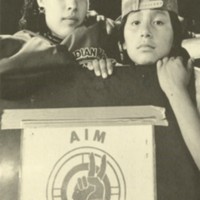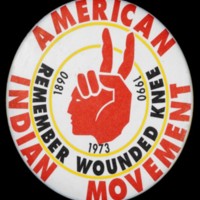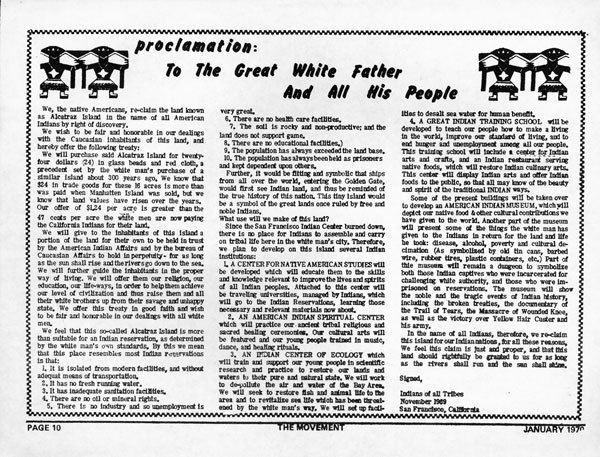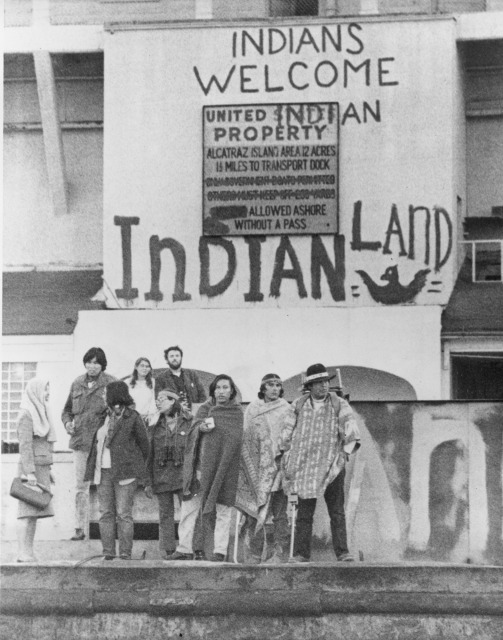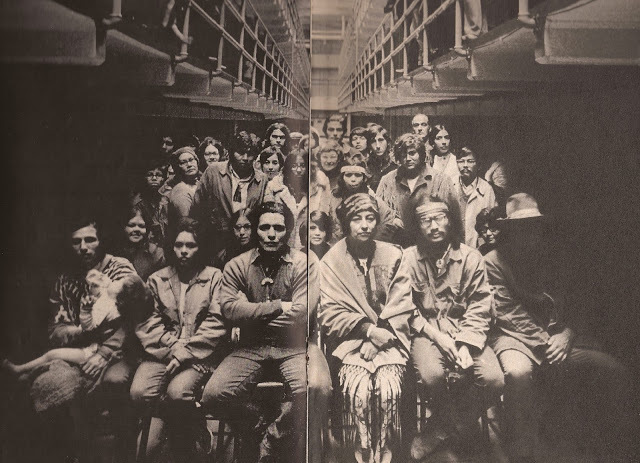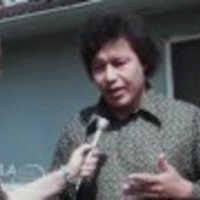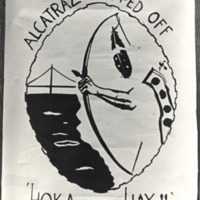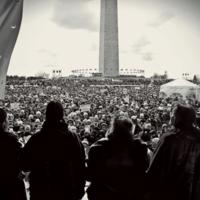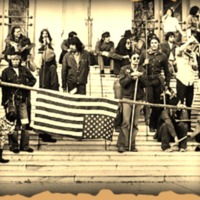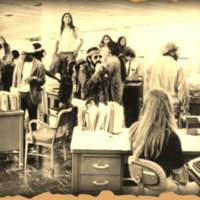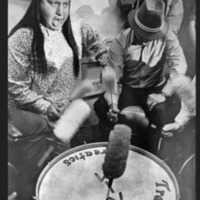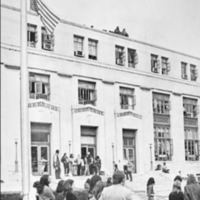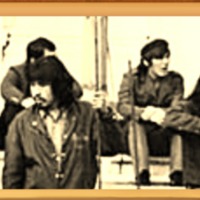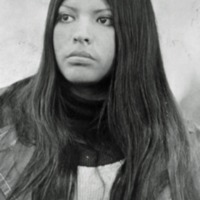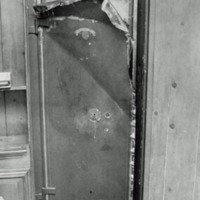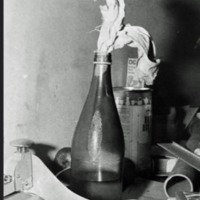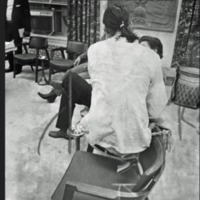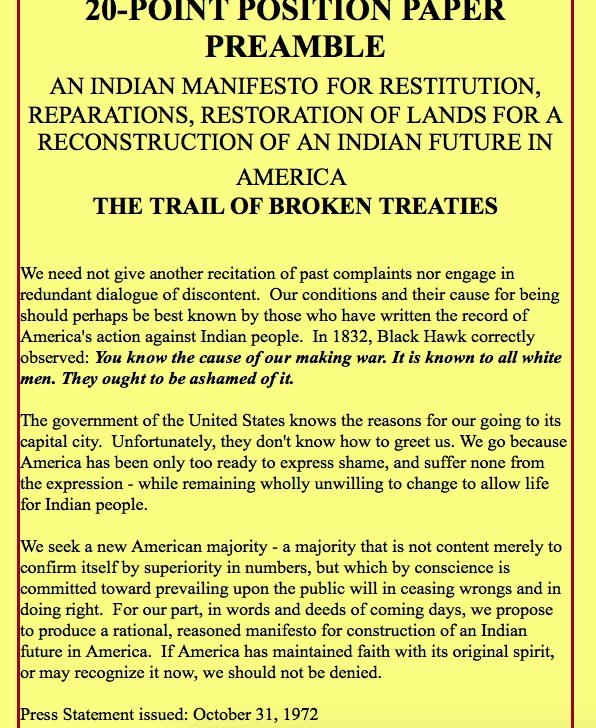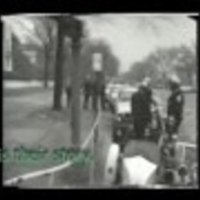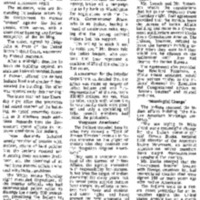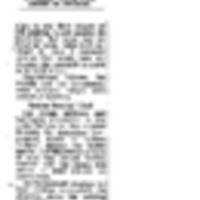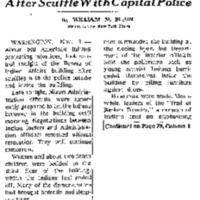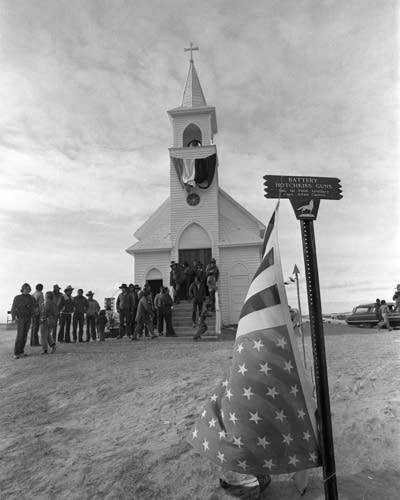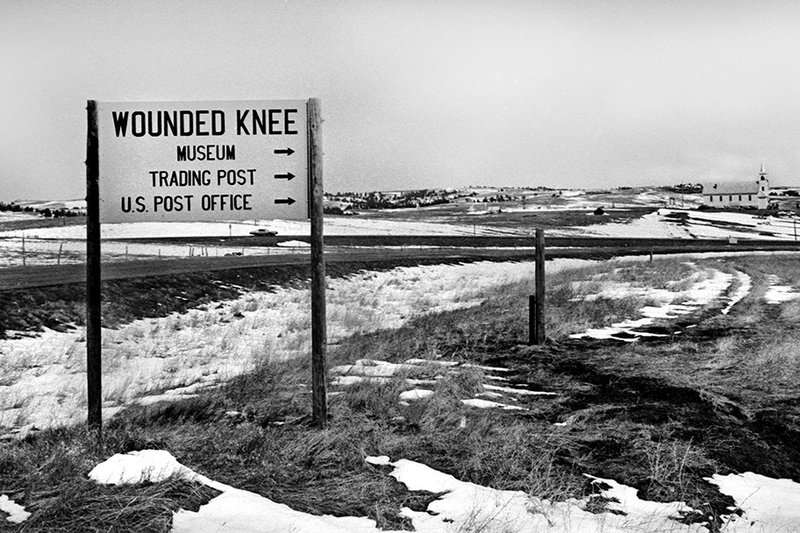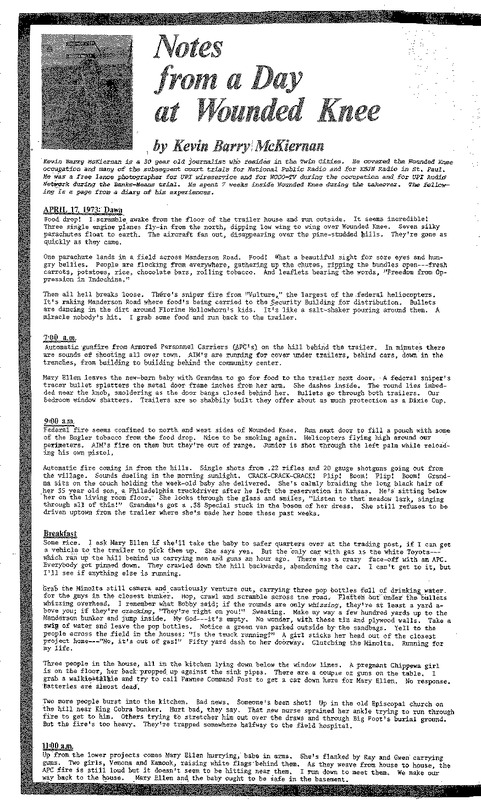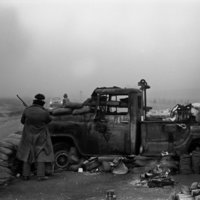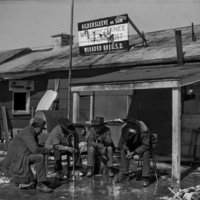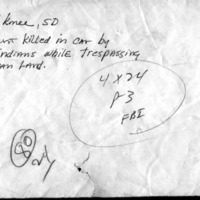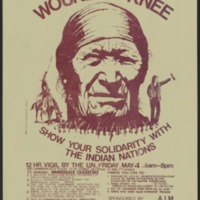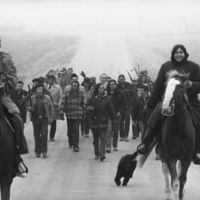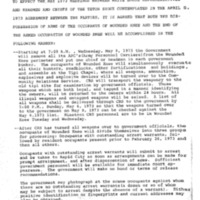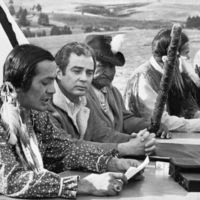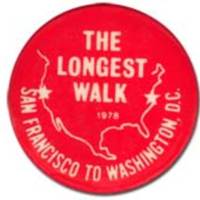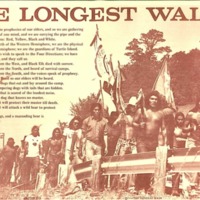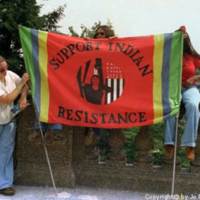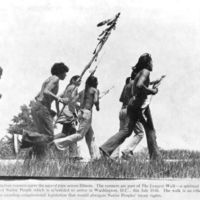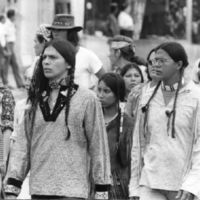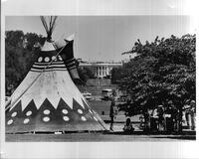American Indian Movement
Overview
In the summer of 1968, Native American activists Dennis Banks, George Mitchell, and Clyde Bellecourt gathered hundreds of like-minded individuals in Minneapolis, Minnesota. Armed with ultimate goal of forcing the United States to recognize Native American sovereignty, the activists formed the American Indian Movement group, or the AIM.
As stated on AIM's official website, the American Indian Movement’s goals were: the recognition of Indian treaties by the United States government, among other goals such as sovereignty and the protection of Native Americans and their liberties. AIM has sought to accomplish these goals over the past five decades by bringing a multitude of successful lawsuits against the federal government with n the hopes of changing U.S. policy.
Key events for the American Indian movement include the group’s formation in Minnesota in 1968, as well as the initial occupation of Alcatraz Island in 1969. The movement also organized the “Trail of Broken Treaties” March, where protesters marched on Washington, D.C.
Following the 1973 occupation by AIM leader Russell Means and his supporters at Wounded Knee in South Dakota, the AIM became an internationally known and recognized civil rights group. The New York Times even ran a story that reported on the vanishing number of Indians, as well as to their unfair treatment by the United States Federal government. In an Atlanta newspaper in 1973, Russel Means said that if the Indian voice isn’t heard among the U.S. government officials, “the situation…will evolve into a bigger and larger Wounded Knee.” It seems that Means was indeed correct, as an FBI officer was killed in a shootout with AIM at the Pine Ridge Reservation two years later.
Symbols and Logos of the American Indian Movement
The Catalyst of the American Indian Movement
The dynamic movements of the 1960’s-1970’s gained momentum as several causes came to the forefront following the Civil Rights Movement. Previously believed to avoid protests, American Indians disproved this stereotype at the occupation of Alcatraz starting in November of 1969. It is said that this kickstarted the American Indian Movement. The decision to occupy Alcatraz originates from the government’s House Resolution 108. This policy requires Native Americans to follow the same laws as American citizens. This law rules that reservation lands that were once protected, and limited to Indian tribes, are now open to the public. Concrete justification for their right to Alcatraz was demonstrated in the Sioux treaty of 1868. This treaty stated American Indians would receive land no longer used by the Federal government that was previously theirs.
In March of 1963, Alcatraz Federal Penitentiary was shut down. The first occupation of “The Rock” occurred a year later. Indian students mobilized for the second and third occupations after San Francisco Indian Center caught on fire. The second short occupation took place on November 9th, 1969. This occupation was significant due to media coverage airing the proclamation “To the Great White Father and All His People,” which emphasized the island’s significance to them. The third, final, and longest occupation started on November 20th, 1969. Nineteen months of resistance was organized by Indians of All Tribes. Indians who were reliant on the government for employment and living assistance following their forced removal and relocation found themselves with no means to support themselves. The government failed to implement a program that helped Indians adjust. Instead, Indians were displaced and had to rely on each other for aid. This new sense of community among Indians in a unfamiliar place began the formation of a strongly connected faction that would later be ready to challenge discriminatory practices.
The four hour occupation that took place in March of 1964 was a protest led by five Indians claiming the land and voicing their dissatisfaction with how Indians in the surrounding urban areas were treated. By November 20th of 1969, numerous tribes were ready for a full occupation of the island. The boats transporting 92 Indians successfully avoided the National Guard, and they quickly established themselves on the island. Requests were made for federal funding, but the government refused and decided to not intervene- this would later lead to the demise of the occupation. Despite lack of government aid or acknowledgement, Indians persevered for nineteen months. They vandalized the existing government signage to designate it as Indian property. The plan was to establish a cultural center in contrast with San Francisco's plan to make it a commercial hotspot. Negotiation rather than forced removal was proposed, but the Indian community was unaffected and did not plan to leave. Supplies came in on boats from activists and Indians still living in the Bay area. Facilities were formed rapidly. Housing was available and job formation was a staple of the island to ensure the incoming residents could adapt and function as they normally would. Educational services were provided as well. More Indians relocated to the island due to its success and support even from celebrities. After the daughter of the unofficial leader, Richard Oakes, died, the island transitioned to harsh leadership under Stella Leach. The island was torn into those in support of Leach and those who didn’t like how the island was now being run. Bay Area Native American Council (BANAC) included Bay area Indians and occupiers. The government made a failed attempt to negotiate only with this organization rather than everyone involved in the occupation. All negotiations were refused.
To terminate their means of getting water, the government hauled away the barge providing their only source. When flames broke out, and with no water to put them out, the island’s buildings burnt down. Leaders like Leach left, students came and went, and violence was unavoidable with the remaining residents on the island. When the government’s back up plan was revealed via a reporter, a mere thirty Indians remained. Support was no longer coming in, and most Indians were ready to advocate for their cause in another way. The government sent federal agents to lead removal in 1971, and no resistance occurred. Although the significance of the Alcatraz occupation dwindled drastically near the end, the American Indian Movement became prevalent across the nation. The occupation banded together tribes of students, families, and Bay area citizens to bring attention to an issue that needed national attention, which it earned with great success.
Gallery
The Trail of Broken Treaties
The trail of broken treaties originated out of an idea of a march on Washington. The focus of the march was to draw attention to treaty rights and issues that faced Native Americans. At the end of September, 50 representatives from different organizations met in Denver and discussed their plans for the march. It was at this meeting that the march was given the name of The Trail of Broken Treaties. Caravans started in Seattle, San Francisco, and LA and travelled from West to East. The caravans stopped at Indian communities along the way and gathered supporters before ending in DC in the last week of the presidential election of 1972. Upon arriving in DC, the members had planned to present their 20 Point Position paper to the presidential candidates, Nixon and McGovern. The paper was created in Minneapolis and it expressed the goals and ideology of the Trail of Broken Treaties including the demand for the federal government to return to treaty making with Indian Nations, a creation of a treaty commission that would review treaty violations and the appropriate compensation for these violations, and a call to conduct federal Indian policy in context of treaty relations. Unfortunately, when the caravans had arrived in D.C., they discovered that both Nixon and McGovern were out of town. The caravan also found that their lodging arrangements had fallen through. The activists had gone the next day to discuss their plans with Commissioner Bruce at the BIA. The activists were told they could stay in the BIA auditorium while the assistant secretary Harrison Loesch, Bruce and Trail leaders discussed housing arrangement. The activists were told that they could lodge in the Department of Interior which was across the street from the BIA, but when they arrived, they found that the doors were locked. The activists felt as if they had been tricked into leaving the BIA so they returned to the BIA. The occupation of the BIA eventually emerged from suspicious, tension, and paranoia.
Infromation taken from: http://www.framingredpower.org/narrative/
Trail of Broken Treaties and The Occupation of the BIA Gallery
This gallery displays 15 pictures from the AIM's march on Washington and their occupation of the BIA. The AIM wanted to present their 20 points of interest to Presidential candidates Nixon and McGovern. I have captioned these picutres with 15 of the AIM's requests. The requests are from the American Indian Movement's 20 Point Position Paper.http://www.aimovement.org/archives/index.html>READ THE ENTIRE PAPER HERE</>as.
All photos taken from this album https://www.flickr.com/photos/washington_area_spark/albums/72157633092409518
Preamble to the 20 Point Position Paper
This is the preamble to the 20 Point Position paper that AIM members wrote in Minneapolis on their Trail of Broken Treaties. The members sought to present their 20 points to the Presidential candidates, Richard Nixon and George McGovern.
Taken from: http://www.aimovement.org/archives/page45.html
Videos from the Trail of Broken Treaties and the Occupation of the BIA
These videos all document the American Indian Movement's occupation of the BIA. The first two videos are oral histories from activists who were present at the event. One of the women interviewed even recounts how she worked for the BIA. She confirms the abuse and neglect towards Native Americans that take place within and because of the BIA. She recounts how she helped lead the group of AIM members into the Bureau. The third video is hisotrical footage from the event.
Newspaper articles on the Trail of Broken Treaties and the Occupation of the BIA
These newspaper articles from the New York Times report on the Trail of Broken Treaties or the Occupation of the BIA. Before the takeover of the BIA, the caravan to Washington DC was sparsely covered. The New York times only produced one short article on the Trail of Broken treaties which is shown above. After the AIM seized control of the BIA, however, they began to receive national attention. The 500 Native Americans denied federal court orders to leave the building multiple times. The Native Americans made several demands from the federal government including reform of land policies, speedy treaty revisions, and the removal of several Federal officials who deal with Indian Affairs. Many Native Americans as well as other supporters gathered outside of the BIA to show their support and bring reinforcements and supplies. During their time in Washington, the AIM had also planned a march to Arlington Cemetery to conduct a spiritual ceremony to honor Indians who have fought in wars, but the march was banned by the US Army. The Native Americans eventually left the building after about a week. The Nixon Administration had promised a thorough review and consideration of their grievances as well as amnesty for the occupation and the $2,000,000 of damage left to the building. On their way out of the building, demonstrators took with them artifacts and paintings from the BIA.
Below is a transcript from an NBC news report of the occupation of the BIA.
AIM Leaders Dennis Banks and Russell Means speak on BIA Occupation
Mr. DENNIS BANKS (American Indian Movement): The nine-point peace package has been accepted by the Interior Department for further exploration. Justice Department officials further assured us, the occupants of the BIA building, that no arrests would be made during the next thirteen hours. The negotiating committee will reconvene at nine o’clock Sunday morning to deal with the proposed peace package and to get clarification on the duties and responsibilities that John Ocroe has here with the BIA. That’s the end of that statement regarding our meetings with the Justice and Interior officials. I’m, I’m--The meeting is favorable, however the committee is not comfortable with the results at this point, that’s why the, we’ve asked to continue negotiations for tomorrow. Now, I understand also that Interior Secretary Morton has made a statement that the people gathered here do not represent Indian people. He claims he does. Secretary Morton is not Indian and for the past so many years that the secretary or Interior Department has handled Indian affairs, the only conclusion that I can arrive at is that the Interior Department also has never represented Indian people.
Mr. RUSSELL MEANS (American Indian Movement Leader): The fact is the press, you know I love the network coverage tonight that concern Carl MacIntyre and that unfortunate incident of the little girl this morning. Our points are not getting across by the national press and once again I want to say that the national press is managing to edit Indian people out of existence. Sensationalism is continually brought out to the front rather than the fact that we are putting our lives on the line for a twenty-points solution paper to any problems.
Mr. BANKS: The Interior Department has been negative to all of the recommendations and demands that we have set before them. They have done so even early this morning when the secretary confined Commissioner Bruce to the Interior Department building. Point number four demanded that there be a restoration of duties and responsibilities and power and authority back to Commissioner Bruce. We demanded that the Interior Department reinstate Commissioner Bruce’s authority. They answered by confining him and restricting him to the Interior Department building. That was their answer. Which again, in the face of what is happening here, they have slapped again, slapped the Indian in his face trying to use Commissioner Bruce as a tool for their benefit. They have kept him behind locked doors which is symbolic in a way because all of us are political prisoners. And I want to restate a position that only with general assembly approval will we release this building. The other alternative is for them to come in here and take it by force. And we will resist at all cost until that decision has been reached by the general assembly itself again.
1972, November 5). AIM Leaders Dennis Banks and Russell Means on BIA Occupation. [Television series episode]. NBC Learn. Retrieved from https://highered.nbclearn.com/portal/site/HigherEd/browse/?cuecard=36530
NBC News Report Transcript
House Committee Hearings Begin into Takeover of Bureau of Indian Affairs- 12/4/1972
JOHN CHANCELLOR, anchor:
A month ago, 500 angry Indians took over the Bureau of Indian Affairs in Washington, stayed there for a week and ransacked the place. The Bureau is still not functioning. Today, Congressional hearings opened on the takeover. Ron Nessen reports.
RON NESSEN reporting:
While the mess at the Bureau of Indian Affairs is still being cleaned up, a House subcommittee began hearings to determine which government officials were responsible for letting the Indians occupy the building, stay six days, and wreck it. The first witnesses were Interior Secretary Morton, Indian Commissioner Bruce, and Assistant Secretary Loesch. Indians crowded the spectator section but no Indians from the protest were invited to tell why they did it. Loesch said he intended to have riot police clear the building the first night of the occupation. But Morton said this was overruled by John Ehrlichman of the White House with President Nixon’s approval to avoid violence. Morton said he agreed to try to get the Indians out by court order rather than by force.
Mr. ROGERS MORTON (Secretary of Interior): The decision was made to use due process of law. The event in my judgment, and I will take full responsibility for that judgment, was that the event was of such a character that the courts should become involved and the Department of Justice should become involved and that’s the route we chose.
Reporter: But Mr. Loesch, you wanted to handle it differently. You wanted to go in and move them out with police the first night.
Mr. HARRISON LOESCH (Assistant Secretary of Interior): That’s true.
Reporter: Well who overruled that decision?
Mr. LOESCH: You heard my testimony. This was an administration decision.
Reporter: That means a White House decision?
Mr. LOESCH: No, sir. That means a decision in which Mr. Hitt and Secretary Morton were fully advised and fully concurred.
NESSEN: The subcommittee invited John Ehrlichman and other White House officials to explain their handling of the Indian occupation. The subcommittee especially wanted to know whether a showdown was delayed to avoid to possible violence just before the presidential election. But Ehrlichman and the others declined to testify on grounds that presidential advisors are not required to answer such questions. So the whole story may never be known publicly. Ron Nessen, NBC News, Washington.
Wounded Knee Occupation 1973
The occupation of Wounded Knee began February 27, 1973 and lasted until May 9, 1973. The 71 day occupation began as a result of the failed impeachment of tribal chairman Dick Wilson, who the Oglala Lakota residents of the Pine Ridge Reservation believed to be corrupt and disrespectful of their culture. After this failure, they turned to AIM for help to protest and remove Wilson from office. On February 27, more than 50 cars full of demonstrators entered the hamlet of Wounded Knee and marked the beginning of the occupation. United States Federal Marshals and the National Guard were prepared for a demonstration from AIM and they blocked off the four routes leading into Wounded Knee. They also cut off electricity and water to the town in an effort to quickly end the siege. The event was covered extensively by the media and garnered support and sympathy from those outside of the reservation. Included in this group of sympathizers was Larry Levin, a member of the airlift crew that dropped food and supplies for the cut-off residents of Wounded Knee.
On the day of the supplies drop, April 17, 1973, Levin described the scene of Wounded Knee from their aircraft:
“I saw the whole panorama of Wounded Knee open up before me -- the hard metallic shapes of armored personnel carriers and military vehicles totally surrounding the village. There were roadblocks on all approaches to the village, and satellite bunkers, communication outposts, and sandbagged trenches everywhere… I saw no people, no movement.”
During the occupation, two Native Americans, Frank Clearwater and Lawrence Lamont, died and one FBI agent, Lloyd Grimm, was shot and paralyzed. After the death of Lamont on April 26th, the Oglala Lakota decided to pursue an agreement with the government to end the occupation. While members of AIM wanted to continue the occupation, an agreement was reached between the occupiers and the government and on May 9th, 1973 the occupiers officially surrendered. More than 300 people were arrested attempting to enter or leave the town during the occupation and, as the agreements called for the arrest of any occupiers with outstanding warrants against them, more arrests ensued at the end of the occupation. Russell Means, one of the AIM leaders during the occupation, was charged with assault, larceny and conspiracy after the occupation but his case was eventually dismissed.
The failed impeachment of Dick Wilson sparked the occupation of Wounded Knee, but another objective was to bring attention to the broken treaties between the federal government and the Native Americans throughout U.S. history. The location itself was a statement to the abuses the Native Americans faced from the federal government due to the previous atrocities committed on the site. In the aftermath of the 1973 occupation, AIM continued to bring attention to the broken treaties, even citing the agreement to end the Wounded Knee occupation as a broken agreement. The document in the gallery below, produced by AIM, states the agreement was “immediately and perfunctorily broken” and serves as another example of AIM attempting to point out the injustices of the federal government toward the Native peoples even after the occupation.
Wounded Knee Gallery
The last major event of the American Indian Movment
The Longest Walk ended the American Indian Movement’s series of major events. From San Fransisco (the location of the Alcatraz occupation) to Washington D.C’s Washington Monument, the American Indian Movement’s Dennis Banks presented the idea for the approximately 3,000 mile march against recently proposed bills. These bills endangered hunting and fishing rights as well as potentially shutting down schools and hospitals used by Natives. American Indians’ tribal legal capacity would be restricted. Two thousand participants marched, Native Americans, and supporters of the Indian resistance movement marched. More than 20 people walked the entire distance for five months. In the end, none of the bills were passed. The Civil Right's period American Indian Movement 's last major event ended with success. Today, Longest Walks are still used to commemorate the first Longest Walk. "Longest Walk 5" is in process right now. Each Longest Walk following the first one focuses on different issues affecting the Native American community.
The picture above is an image of an Indian emcampment at Wounded Knee in 1973 and shows how the native populations experienced a cultural revival during this time.
Impact
There is little doubt that the formation of the AIM provided a much needed cultural revival for the American native peoples. Due to the militant nature of their organization, however, many of the activists who were involved with AIM were constantly busy battling with the United States in the form of court appearances and various legal fees. Despite this, however, the occupations that were organized by the American Indian Movement still served to draw international attention to the issues of current Native Americans. The worldwide attention helped the Native American's and their struggle within America, influenced court decisions and positively influenced the ways in which the Native Americans were treated. By changing both the perspectives of individual people as well as striving to change written law, AIM has succeeded in improving the standard of living for Native Americans living in the United States.
Works Cited:
“1978: ‘Longest Walk’ draws attention to American Indian concerns.” Native Peoples’ Concept of Health and Illness. Accessed on March 28, 2017. https://www.nlm.nih.gov/nativevoices/timeline/546.html
“A brief history of the American Indian Movement.” AIMmovement.org. None. April 1st, 2017. https://www.aimovement.org/ggc/history.html
“A Good Day to Die- Bureau of Indian Affairs Sit-In.” Youtube, January 26, 2012. Accessed March 31, 2017, https://www.youtube.com/watch?v=lCa510f13Iw
"A Long List of Grievances." New York Times (1923-Current File), Nov 12, 1972. 1. Date Accessed March 28, 2017, http://proxy-remote.galib.uga.edu:80/login?url=http://search.proquest.com/docview/119392572?accountid=14537.
“AIM and Wounded Knee Documents.”American Indian and Cultural Support. Accessed April 1, 2017. http://aics.org/WK/
“AIM Leaders Dennis Banks and Russell Means on BIA Occupation.” [Television series episode]. NBC Learn. 1972, November 5. Accessed on March 28, 2017, https://highered.nbclearn.com/portal/site/HigherEd/browse/?cuecard=36530
“American Indian Movement.” Brittanica.com. None. April 2nd, 2017. https://www.britannica.com/topic/American-Indian-Movement
“American Indian Movement.” Enclyclopedia.com. None. March 31st, 2017. http://www.encyclopedia.com/history/united-states-and-canada/north-american-indigenous-peoples/american-indian-movement
“American Indian Movement.” Libguides.mnhs.org/images. None. March 30th, 2017. http://libguides.mnhs.org/aim/images
“American Indian Movement: Overview.” Libguides.mnhs.org. None. March 30th, 2017. http://libguides.mnhs.org/aim
“A Photographer Remembers Wounded Knee, 40 Years Laters.” NPR. February 27, 2013. Accessed on April 1, 2017. http://www.npr.org/sections/pictureshow/2013/02/27/173048452/revisiting-wounded-knee-40-years-later
Bell, Chuck. "AIM Leader Protests Motion by Prosecutors." The Atlanta Constitution (1946-1984) Sep 12 1973: 1. ProQuest. 29 Mar. 2017
Goldstein, Margaret. You Are Now on Indian Land: The American Indian Occupation of Alcatraz Island, California, 1969. Minneapolis, MN. Lerner Publishing Group, 2011.
“Holding the Rock: The “Indianization” of Alcatraz Island, 1969-1999.” The Public Historian. 2001. Accessed on March 28, 2017. http://www.jstor.org/stable/10.1525/tph.2001.23.1.55?&seq=1#page_scan_tab_contents
“House Committee Hearings Begin into Takeover of Bureau of Indian Affairs.” NBC Learn. December 4, 1972. Accessed March 28, 2017, https://highered.nbclearn.com/portal/site/HigherEd/browse/?cuecard=36530
"Indians in Capital Defy a Court Order." New York Times (1923-Current File), Nov 04, 1972. 42, Date Accessed March 28, 2017, http://proxy-remote.galib.uga.edu:80/login?url=http://search.proquest.com/docview/119524181?accountid=14537.
"INDIANS STAYING IN U.S. BUILDING." New York Times (1923-Current File), Nov 05, 1972. 37, Accessed March 28, 2017, http://proxy-remote.galib.uga.edu:80/login?url=http://search.proquest.com/docview/119503102?accountid=14537.
"INDIANS TO BEGIN CAPITAL PROTESTS." New York Times (1923-Current File), Oct 31, 1972. 31. Date Accessed, March 30, 2017, http://proxy-remote.galib.uga.edu:80/login?url=http://search.proquest.com/docview/119447380?accountid=14537.
“Memories of the Wounded Knee Airlift April 17, 1973.” February 17, 1998. Accessed April 1, 2017. http://www.dickshovel.com/lsa7.html
“Native Americans Take over the Bureau of Indian Affairs:1972.” Washington Area Spark, November 29, 1972. Accessed March 28, 2017, https://washingtonspark.wordpress.com/2013/03/26/native-americans-take-over-bureau-of-indian-affairs-1972/
“Native Americans walk from San Francisco to Washington, D.C. for U.S. civil rights, 1978.” Global Nonviolent Action Database. Accessed on March 28, 2017. http://nvdatabase.swarthmore.edu/content/native-americans-walk-san-francisco-washington-dc-us-civil-rights-1978
“Occupy Wounded Knee: A 71-Day Siege and a Forgotten Civil Rights Movement.” The Atlantic. October 23, 2012. Accessed April 1, 2017. https://www.theatlantic.com/national/archive/2012/10/occupy-wounded-knee-a-71-day-siege-and-a-forgotten-civil-rights-movement/263998/\
“Occupation of Wounded Knee is Ended.” The New York Times. May 9, 1973. Accessed April 1, 2017. http://proxy-remote.galib.uga.edu:80/login?url=http://search.proquest.com/docview/119905358?accountid=14537
“Planning, the Caravan, and the Breakdown.” Framing Red Power, 2009-2017. Accessed March 30, 2017, http://www.framingredpower.org/narrative/tbt/planning/
Sterba, James P. "They'Re Trying Not to Vanish." New York Times (1923-Current file) Nov 11 1973: 232. ProQuest. 29 Mar. 2017.
“The 20 Point Position Paper Preamble and the 20 Point Position Paper” The American Indian Movement, October 1972. Accessed March 29, 2017, http://www.aimovement.org/archives/page45.html
“The Occupation of Alcatraz Island: Roots of American Indian Activism.” Wicazo Sa Review. 1994. Accessed on March 28, 2017. http://www.jstor.org/stable/1409133?&seq=1#page_scan_tab_contents
“Trail of Broken Treaties.” Youtube, February 27, 2013. Accessed March 31, 2017, https://www.youtube.com/watch?v=AXqh_gQyCiU
“Urban Rez: BIA Takeover.” Youtube, October 11, 2013. Accessed March 31, 2017, https://www.youtube.com/watch?v=ByjAEGcvk7g
Wurtzburg, Susan J. "American Indian Movement (AIM)." The
Seventies in America (Online Edition), January. April 1st, 2017. http://search.ebscohost.com/login.aspx
?direct=true&db=ers&AN=89110759&site=eds-live

